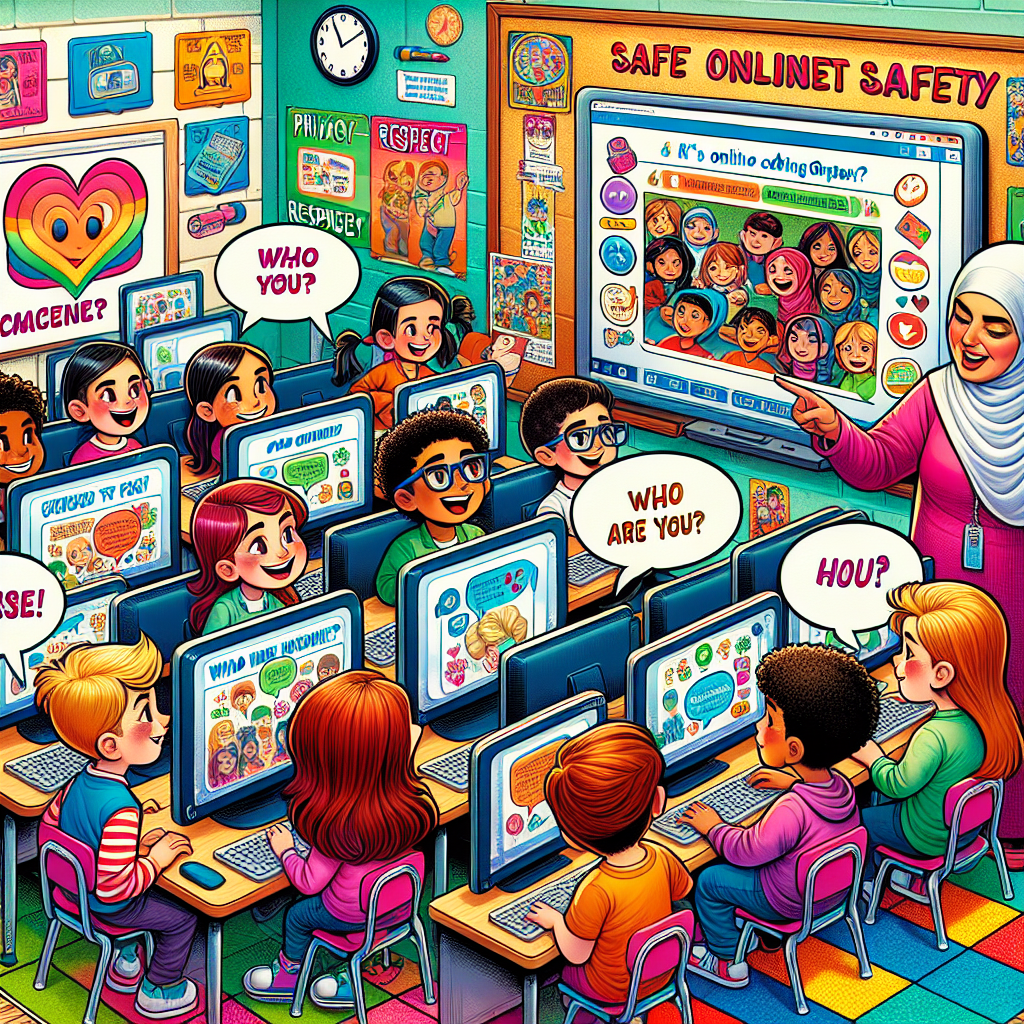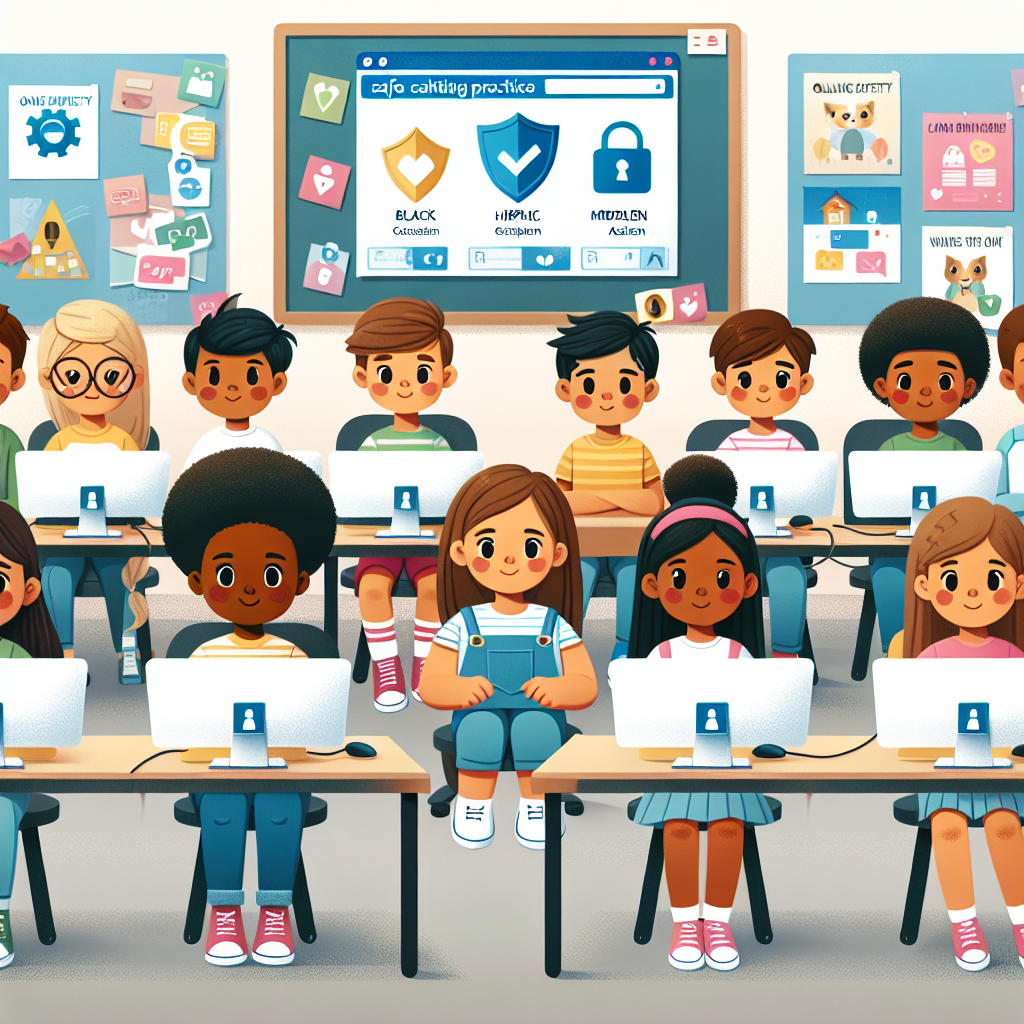In today’s digital age, children are increasingly engaging in online chatting activities, whether through social media platforms, messaging apps, or online games. While chatting can be a fun and convenient way to stay connected with friends, it also comes with potential risks if not approached carefully. To ensure a safe and positive experience for kids, it is crucial to educate them on safe online practices. This includes topics such as privacy protection, avoiding sharing personal information with strangers, recognizing and reporting inappropriate behavior, and understanding the importance of being cautious and respectful in online conversations. By instilling these practices early on, parents and guardians can help children navigate the digital world securely and confidently. To learn more: www.attexperts.com
Understanding the Risks of Online Chatting

Identifying potential dangers
Online chatting can expose children to various risks, including:
– Exposure to inappropriate content: Children may come across inappropriate language, images, or topics while chatting online, which can be harmful to their mental and emotional well-being.
– Interaction with strangers: Chat rooms and social media platforms can provide a platform for children to interact with strangers, who may not have good intentions. This can lead to potential dangers such as grooming, cyberbullying, or even exploitation.
– Cyberbullying: Online chatting can also make children vulnerable to cyberbullying, where they may be subjected to harassment, threats, or humiliation by their peers or strangers.
Discussing the importance of parental supervision
Parental supervision plays a crucial role in ensuring the safety of children while chatting online. It is essential for parents to:
– Set boundaries: Establish clear rules and guidelines for online chatting, including time restrictions and the types of platforms or websites that are allowed.
– Monitor activity: Regularly check on your child’s online activity, including the sites they visit and the people they interact with. This can help identify any potential risks early on.
– Open communication: Encourage open communication with your child about their online experiences. Make them feel comfortable discussing any concerns or incidents they may encounter while chatting online.
Highlighting the risks of sharing personal information
Children should be aware of the risks associated with sharing personal information online, including:
– Identity theft: Sharing personal details such as full name, address, school information, or contact numbers can make children vulnerable to identity theft or fraud.
– Location disclosure: Revealing their current location or future plans online can pose a risk of physical harm, as it can make them an easy target for predators or criminals.
– Privacy concerns: Children should understand the importance of safeguarding their privacy online and think twice before sharing any personal information with strangers.
Recognizing Common Threats in Online Chatrooms
Understanding the Risks of Online Chatting
Online chatrooms can expose children to various risks and dangers that may harm their well-being and safety. It is crucial for parents and guardians to be aware of these threats to better protect their children while they are engaging in online conversations.
Cyberbullying and its impact
- Cyberbullying is a prevalent threat in online chatrooms where individuals, often anonymously, use digital platforms to harass, intimidate, or humiliate others.
- The impact of cyberbullying on children can be severe, leading to emotional distress, low self-esteem, and even mental health issues.
- Parents should educate their children about identifying and reporting cyberbullying behavior to prevent prolonged harm.
Exposure to inappropriate content
- Online chatrooms may contain or lead children to access inappropriate content such as explicit language, graphic images, or discussions about violence and drugs.
- Exposure to such content can desensitize children, distort their understanding of appropriate behavior, and potentially put them in dangerous situations.
- Implementing parental controls and discussing the importance of avoiding and reporting inappropriate content can help safeguard children from harmful exposure.
Risks of interacting with strangers
- Online chatrooms facilitate interactions with strangers, posing risks of encountering individuals with malicious intentions.
- Strangers in chatrooms may deceive children by pretending to be someone they are not, leading to dangerous offline meetings or sharing personal information.
- Parents should emphasize the importance of never sharing personal details, photos, or meeting strangers from online chatrooms to prevent potential risks to their child’s safety and privacy.

Implementing Safety Measures for Secure Online Chatting
In the digital age, ensuring the safety of children while they engage in online chatting activities is paramount. By implementing various safety measures, parents and guardians can create a more secure online environment for kids to interact in.
- Setting up parental controls on devices: One effective way to safeguard children during online chatting is by utilizing parental control settings on devices. These settings allow adults to monitor and restrict the content that children can access, including chatrooms and messaging apps. By setting up filters and controls, parents can limit the risk of children being exposed to inappropriate content or interacting with strangers online.
- Educating children about online etiquette: Another crucial safety measure is to educate children about proper online etiquette. Teaching kids about the importance of not sharing personal information, such as full names, addresses, or school details, can help prevent them from becoming targets for online predators. Additionally, instilling the value of respectful communication and digital citizenship in children can promote positive interactions in online chatrooms.
- Establishing guidelines for chatroom usage: Creating clear guidelines for chatroom usage is essential for ensuring children’s safety during online chatting. Parents should establish rules regarding which chatrooms are permissible, the duration of chatting sessions, and the importance of reporting any suspicious behavior or messages. By setting boundaries and expectations, adults can empower children to navigate online chatrooms responsibly and safely.
Utilizing Secure Platforms for Child-Friendly Communication
In today’s digital age, ensuring that children engage in online chatting activities in a safe and secure manner is paramount. Choosing the right platforms for child-friendly communication plays a crucial role in safeguarding their online interactions. Here are some key points to consider when selecting secure platforms for kids:
- Recommending safe chatroom options: It is essential to steer children towards reputable and secure chatroom options that are specifically designed for kids. Platforms that offer age-appropriate content filters, strict moderation, and parental controls can help create a safer online chatting environment for children.
- Exploring moderated and monitored chat environments: Opting for chat platforms that are actively moderated and monitored can significantly reduce the risks associated with online chatting. These environments often have designated moderators who oversee conversations, enforce community guidelines, and swiftly address any inappropriate behavior or content.
- Emphasizing the significance of encryption in messaging apps: When it comes to messaging apps, prioritizing platforms that offer end-to-end encryption can enhance the security and privacy of children’s online conversations. Encryption ensures that messages exchanged between users are scrambled and can only be deciphered by the intended recipients, minimizing the chances of unauthorized access to sensitive information.
By proactively selecting secure platforms that cater to child-friendly communication, parents and caregivers can help create a safer online chatting experience for kids, mitigating potential risks and promoting responsible digital citizenship.
Educating Kids on Safe Online Communication
Teaching children about privacy settings:
- Explain the concept of privacy settings: Start by defining what privacy settings are and why they are important in maintaining online safety. Use age-appropriate language to ensure understanding.
- Demonstrate how to adjust privacy settings: Walk children through the process of adjusting privacy settings on various platforms they use. Show them how to control who can view their profile, contact them, and see their posts.
- Discuss the implications of sharing personal information: Emphasize the risks associated with sharing personal information online, such as full name, address, school name, or phone number. Encourage children to think twice before disclosing such details in chat rooms or social media platforms.
Encouraging open dialogues about online experiences:
- Create a safe space for discussions: Foster an environment where children feel comfortable sharing their online experiences, both positive and negative. Assure them that they can come to you with any concerns or questions without fear of judgment.
- Ask open-ended questions: Instead of asking yes or no questions, prompt children to provide detailed responses about their interactions online. This allows for deeper conversations and insights into their online behaviors.
- Offer guidance and support: When children encounter challenging situations online, offer guidance on how to handle them. Teach them to seek help from a trusted adult if they feel uncomfortable or threatened during online chats.
Role-playing scenarios to promote safe decision-making:
- Set up real-life scenarios: Create scenarios that children may encounter while chatting online, such as receiving messages from strangers or being asked to share personal information. Role-play these situations to help children practice safe decision-making in a controlled environment.
- Encourage critical thinking: Prompt children to think critically about the consequences of their actions in each scenario. Discuss potential risks and benefits of different responses to help them make informed choices during online interactions.
- Reinforce positive behaviors: Praise children for making safe choices during role-playing exercises. Positive reinforcement can boost their confidence in applying safe online communication practices in real-life situations.
Addressing the Importance of Consent and Boundaries
When educating kids on safe online communication, addressing the importance of consent and boundaries is crucial to help them navigate the digital world securely. The concept of consent in online interactions is a fundamental aspect that children need to understand to protect themselves. Here are some key points to consider:
- Discussing the concept of consent in online interactions: Teaching children that they should never share personal information, such as their full name, address, school details, or contact information, without explicit permission from a parent or guardian is essential. Emphasize that they should always ask for consent before sharing any information with someone online, even if it seems harmless.
- Establishing boundaries for sharing information: Setting clear boundaries on what information is safe to share online is essential. Encourage children to only share information that is necessary for the conversation or activity they are engaging in and to avoid disclosing sensitive details that could compromise their safety.
- Empowering kids to assert their digital boundaries: Teach children to be assertive in setting and enforcing their digital boundaries. Encourage them to say no to any requests or conversations that make them feel uncomfortable or unsafe. Empower them to block or report individuals who violate their boundaries without hesitation.

By addressing the importance of consent and boundaries in online communication, children can develop a strong foundation for safe and responsible chatting practices. Promoting open discussions and reinforcing these principles regularly can help children navigate the online world with confidence and awareness.
Monitoring and Supervising Children’s Online Chatting Activities
Parents and guardians play a crucial role in ensuring the safety of children while they engage in online chatting activities. Monitoring and supervising these interactions can help mitigate potential risks and protect children from harm. Here are some key practices to consider:
- Regularly reviewing chat histories: It is essential for parents to periodically check and review their children’s chat histories to monitor the conversations they are having with others. By doing so, parents can identify any inappropriate language, behavior, or interactions that may indicate a potential risk.
- Keeping an eye on the time spent chatting: Excessive time spent chatting online can be a red flag for potential issues. Parents should set limits on the amount of time children are allowed to spend chatting and ensure that it does not interfere with their daily routines or responsibilities.
- Staying informed about the platforms and apps used for communication: With new chat platforms and apps constantly emerging, it is crucial for parents to stay informed about the platforms their children are using for communication. Understanding the features, privacy settings, and potential risks associated with these platforms can help parents guide their children on safe chatting practices.
By actively monitoring and supervising children’s online chatting activities, parents can create a safer online environment for their children and help them develop healthy digital communication habits.
FAQs: Safe Online Chatting Practices for Kids
What are some important safety tips for kids when chatting online?
It is important for kids to remember to never share personal information such as their full name, address, phone number, or school name with strangers online. Kids should also be cautious when agreeing to meet someone they have met online and should always talk to a trusted adult before doing so. In addition, kids should be mindful of the language they use and avoid sharing inappropriate or compromising images or videos.
How can kids identify if someone they are chatting with online is not who they say they are?
Kids should be cautious of strangers who try to quickly build a relationship with them online or ask for personal information. Signs that someone may not be who they say they are include inconsistencies in their stories, refusing to video chat or meet in person, and avoiding questions about their background or personal life. If a child suspects that someone they are chatting with is not who they claim to be, they should stop communicating with them and report them to a trusted adult.
What should kids do if they feel uncomfortable or threatened while chatting online?
If a child feels uncomfortable or threatened while chatting online, they should immediately end the conversation and block the person. Kids should also talk to a trusted adult about the situation and report any concerning behavior to the platform or website where the chatting took place. It is important for kids to trust their instincts and seek help if they feel unsafe while chatting online.
How can parents help their kids stay safe while chatting online?
Parents can help their kids stay safe while chatting online by setting clear rules and guidelines for their online activity. This includes monitoring their child’s online interactions, discussing the importance of privacy and safety, and teaching them how to recognize and respond to potentially dangerous situations. Parents should also encourage open communication with their child and be available to help and support them if they encounter any issues while chatting online.